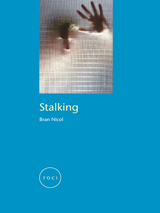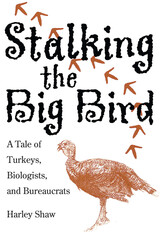
A novel of suspense set in the academic world, Assault with a Deadly Lie probes the disturbing psychological impact of slander, harassment, stalking, police brutality, and the loss of personal safety. What will Nick do when his world threatens to collapse? How can he reestablish order in a suddenly chaotic life?
Assault with a Deadly Lie, the eighth installment of Lev Raphael's Nick Hoffman Mysteries, propels the series to a new level of danger and intrigue as Nick and Stefan are catapulted out of their tranquil existence by shocking accusations.
Finalist, Midwest Book Award for Mystery/Thriller Fiction, Midwest Independent Publishers Association
“A riveting great read for mystery/suspense fans, author Lev Raphael once again documents his impressive gifts as a storyteller, holding the reader’s rapt attention from beginning to end with unexpected plot twists and surprise twists.”—Jack Mason, Midwest Book Review
“Raphael portrays with frightening power the wrenching experience of victimization by the corporatized, PR-prioritized groves of academia, where both men teach, and by local authorities militarized into SWAT teams practicing police brutality. . . . The compelling core of this unusual novel is Raphael’s depiction of the agonizing reality of victims’ shame, in which someone ‘feels doubly exposed talking about the violation’ and so says nothing.”—Booklist
“Professor Nick Hoffman learns that even tenure can’t guarantee real security.”—Kirkus Reviews

It scares—and titillates—in such movies as The Hand That Rocks the Cradle and Basic Instinct. It violently ended the lives of legendary artists such as Selena and John Lennon, and thousands of people endure it daily in anonymity from ex-lovers and strangers. Stalking has been a fact of human society for a surprisingly long time, yet it is only in the last two decades that the term “stalking” came into wide use throughout mass culture. Bran Nicol traces here the history of stalking and chronicles how acts of extreme obsession have created a public fixation of their own.
This unprecedented study draws on a wealth of sources—including forensic psychology, films, literature, news reports, and cultural theory—to examine stalking as a behavior and a social phenomenon. Moving from Samuel Richardson’s Clarissa to Fatal Attraction and from Charles Dickens’s Our Mutual Friend to Taxi Driver and One Hour Photo, Nicol skillfully probes how stalking has pervaded our civilizatoin for over two hundred years. He then turns his focus to the role that stalking plays in the context of our contemporary media-saturated culture, posing provocative questions about the state of modern society: Have interpersonal relations become increasingly intense or more perverse today? Are we dealing with something truly new, or is stalking simply the latest name for an age-old form of social interaction? Stalking also examines cases of deadly obsession with celebrities, such as Jodie Foster, and explores how such fixations are fueled by mass media and the Internet.
A wholly fascinating and groundbreaking investigation into one of the extreme consequences of our hyper-connected age, Stalking provides a thorough understanding of this disturbingly compelling abnormality.

State and federal wildlife agencies have for some sixty years functioned under the belief that increased knowledge produced by research improves our ability to manage wildlife. Shaw suggests that the more we know about a species, the more difficult clear decisions may often become. He offers shrewd observations on the difficulties of interpreting and implementing research results in the face of pressures exerted by government bureaucracies, non-governmental organizations, and politically powerful loggers, ranchers, land developers, and environmentalists. He also shows that management of even a common game bird may be beyond the capabilities of responsible resource management agencies. Through stories about his own experiences studying Merriam's wild turkey—anecdotes about the foibles of field work and the bureaucratic boondoggles of wildlife management—Shaw reveals some of the complexities involved in wildlife research.
Drawing on a lifetime of work and reflection, his book shows that sound research and effective management of this animal—and, by extension, others—are severely hampered by political agendas, social misunderstandings, inappropriate research, and above all, human indifference. As entertaining as it is informative, Stalking the Big Bird will be of interest to environmentalists, hunters, and resource managers—or anyone confused by the practices of modern wildlife conservation. It will help both professionals and lay readers understand our relationship with one wild subspecies, and in the process get a better handle on the true goals in managing the wild.
READERS
Browse our collection.
PUBLISHERS
See BiblioVault's publisher services.
STUDENT SERVICES
Files for college accessibility offices.
UChicago Accessibility Resources
home | accessibility | search | about | contact us
BiblioVault ® 2001 - 2024
The University of Chicago Press









